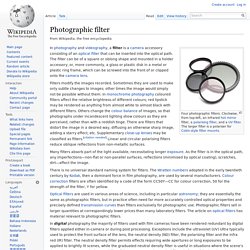

Learn To Shoot Proper White Balance using Kelvin Temps. Over the years, I have taught numerous workshops for photographers and during those classes one of the most appreciated techniques that we discuss is shooting proper white balance using Kelvin temperatures.

If it is something new to you, it might at first seem a bit overwhelming but I guarantee it is actually quite simple to learn. Read on to learn just how easy it is and the benefits of shooting in Kelvin versus Auto White Balance. Tired of your images getting a strange color cast? Fed up of sickly-blue grey skin when shooting in the shade? Wish your colors were more consistent in a set making it easier to make batch edits or sync settings across the board?
So, what exactly is Kelvin? If you review this graphic you will notice that the temperature of light of a candle is roughly about 2000K. Now, these numbers are of course all just rough estimates and depending on numerous factors we might be adjusting them to better match the temperature of light we are shooting in. Nothing found for Interviews Cfm. Nothing found for Foodchain Cfm. Chris Jordan - Running the Numbers II. This ongoing series looks at mass phenomena that occur on a global scale.

Similarly to the first Running the Numbers series, each image portrays a specific quantity of something: the number of tuna fished from the world's oceans every fifteen minutes, for example. But this time the statistics are global in scale, rather than specifically American. Finding meaning in global mass phenomena can be difficult because the phenomena themselves are invisible, spread across the earth in millions of separate places.
There is no Mount Everest of waste that we can make a pilgrimage to and behold the sobering aggregate of our discarded stuff, seeing and feeling it viscerally with our senses. Instead, we are stuck with trying to comprehend the gravity of these phenomena through the anaesthetizing and emotionally barren language of statistics. Compounding this challenge is our sense of insignificance as individuals in a world of 6.7 billion people. ~cj. Chris Jordan: Turning powerful stats into art. 50 Stunning Examples Of Reflective Photography. Using reflections in photography can lead to some amazing effects and beautiful images.

Using water, windows, mirrors or any sort of reflective surface can change an image into a work of art. The wonderful thing about using reflections when taking photos is that they can completely alter the image from something fairly straightforward to something richer or abstract or otherwise more artistic. Sometimes reflections can be annoying and certainly not artistic. But creativity and good-quality photos depend on the photographer being able to see things differently, rather than seeing only one part of a larger whole.
Also, using reflected light can vastly improve the quality of lighting available. Whether you choose to use reflection in an artistic way or as a source of lightning, learning to use reflections in photography will help take your photographic skills to the next level. Reflection Photo Gallery by Vlada Marinkovic at pbase.com. Receptors of the Back of the Eye: Retina, Rods, Cones & Fovea. How we see color - Colm Kelleher. Her Houses - Georgia O'Keeffe Museum. Untitled. Untitled. Chris Jordan - Running the Numbers II. Chris Jordan: Turning powerful stats into art. Sebastião Salgado: The silent drama of photography. 580 430 Speedlite Tutorial Training Video. Photography Tutorial - How to Use 'Fill In' Flash. Flashes Part 5: Fill Flash - Photography with Imre - Episode 17.
Photographic filter. In photography and videography, a filter is a camera accessory consisting of an optical filter that can be inserted into the optical path.

The filter can be of a square or oblong shape and mounted in a holder accessory, or, more commonly, a glass or plastic disk in a metal or plastic ring frame, which can be screwed into the front of or clipped onto the camera lens. Filters modify the images recorded. Sometimes they are used to make only subtle changes to images; other times the image would simply not be possible without them. In monochrome photography coloured filters affect the relative brightness of different colours; red lipstick may be rendered as anything from almost white to almost black with different filters. Others change the colour balance of images, so that photographs under incandescent lighting show colours as they are perceived, rather than with a reddish tinge.
There is no universal standard naming system for filters. How to Use Filters. Home Donate New Search Gallery How-To Books Links Workshops About Contact Filters © 2011 Ken Rockwell.com I get my filters at Adorama, Amazon, B&H, Calumet, Ritz, J&R and eBay.

It helps me keep adding to this site when you use these links to get your goodies, too. Thanks! Ken. How to read the photographic histogram? Digital Photography. Using Zones for Black and White Photography: Exploring Photography with Mark Wallace: AdoramaTV. The Zone System. Reading the Histogram (Photography in 90 Seconds) This Is Color : The Study Of Light - 1950's Educational Documentary. 5 Insane Facts About Light and Color. Color Theory In Photography. Color Theory in Photography. Prepping your camera and taking HDR, bracketed exposures. No more blurred photo's... Ever!